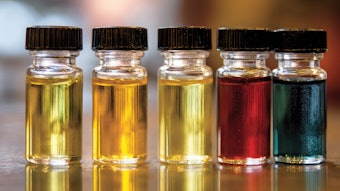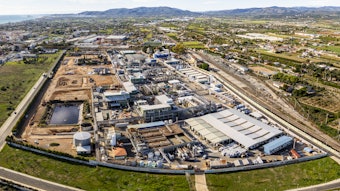To begin our discussion on how to get usable information from a gas chromatograph, let us consider the detector, the part of the instrument that translates the information that the chromatograph generates. (See figure 1.) It produces a typical sample that we might run across in our daily work. Let us imagine that we have just run a sample and the chromatogram in figure 2 is what we have obtained. How can we extract some usable information using just our GC?
Gas chromatography as an analytical tool has traditionally been known as a good quantitative tool, but a poor qualitative tool. Basically this means that gas chromatography is pretty good at separating mixtures into their component parts and then giving us a relative concentration of each of the components. However, it is poor at telling us what these components are.
Since the inception of gas chromatography, we have been trying to devise methods of reliably identifying these components. Our approximately twenty-five years of struggling has produced some interesting techniques such as GC-MS and GC-FTIR.










